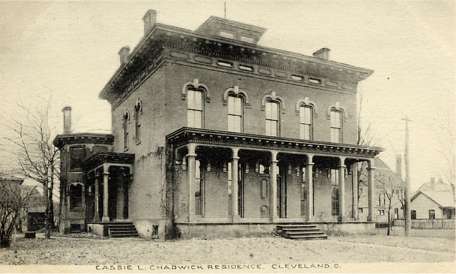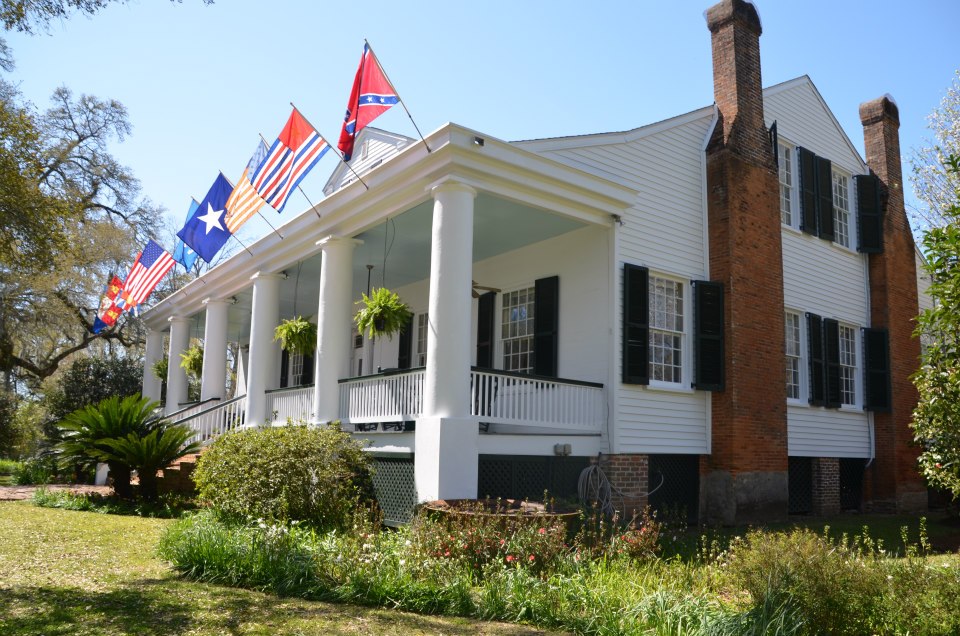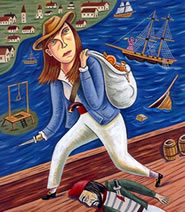- Details
- Written by: G.S. Strange
- Category: Archive
- Hits: 1755

Cassie Chadwick (1857-1907)
Most criminal profilers in America agree that the success of a good con is the perpetrator of the cons ability to think on their feet, adjust to all situations in an instant and be on a constant vigil for the next opportunity. Elizabeth Bigley, a con woman since the age of 11, did not perfect her abilities until she was nearly 40 years old and her biggest con goes down in America’s strange history as one of the most elaborate and successful cons ever perpetrated in America.
At the age of 13, Elizabeth Bigley was first arrested for forgery, in Ontario, Canada. She had opened a bank account with very little money and began writing bad checks to businesses in Woodstock, Ontario. The courts determined that the young Elizabeth was mentally troubled and released her to her father. She made her way to Cleveland, Ohio in 1875, to be with her newly married sister. Elizabeth was in need of employment so she set up shop as a fortune teller under the name of Madame Lydia de Vere. Over the next 14 years she was married twice, first to Dr. Wallace Springsteen who quickly discovered her criminal behavior and filed for divorce. She next married a farmer named John Scott, however farm life did not suit Elizabeth and the couple was divorced four years later.
Elizabeth returned to Cleveland under the name of Cassie Hoover and opened a brothel on the west side of the city. To mask the criminal activities of her establishment, Elizabeth posted her address, in Cleveland’s City Directory, as a boarding house for single women. There, in 1897, Elizabeth met and later married a wealthy doctor, Leroy Chadwick. Cassie Chadwick was not well received within Cleveland’s elite but that did not stop her from trying to fit in. She was known to spend large amounts of her husband’s money on spending spree’s and throwing lavish parties to impress the socialites who lived along Euclid Avenue, Cleveland’s “Millionaire Row”. Shortly after their marriage, Elizabeth began to set the stage or her biggest con when she revealed to her new husband that she was the illegitimate daughter of industrialist and philanthropist, Andrew Carnegie. Dr. Chadwick took his new bride on a buying trip to New York City where Elizabeth, with the help of an Ohio banker who was acquainted with her husband, made her way to the home Carnegie. When she returned to the honeymoon suite in the Holland House hotel, she was in possession of a promissory note for two million dollars, endorsed by Carnegie, which Elizabeth claimed was a payoff to keep his illegitimate daughter quiet and out of the newspapers of the era. She furthermore claimed that she was in possession of ten million dollars worth of promissory notes.

Cleveland Mansion of Cassie Chadwick
Upon her return to Cleveland, Elizabeth entered the Citizens Bank of Oberlin, Ohio seeking a loan from the unsuspecting bank president. Using the promissory note and the well respected Chadwick name, she secured a loan for $200,000. Over the next eight years Elizabeth, borrowing from bank after bank, as well as individuals, amassed and spent a fortune estimated to be nearly $10,000,000 (approximately $85,000,000 in 21st century dollars). Her newfound wealth shot her to the top of the social scene in Cleveland and she was dubbed, “The Queen of Ohio”, by the Cleveland newspapers. The banks and individuals who gave loans to Elizabeth never thought to question the promissory notes that she was providing. In many cases she would ceremoniously place forged promissory notes in safety deposit boxes of the banks that she was bilking out of hundreds of thousands.
The con came to an end in November of 1904 when Boston banker and millionaire, Herbert Newton arrived in Cleveland seeking payment for a $190,000 loan which he had given her on a $1,000,000 promissory note. Elizabeth claimed that she could not repay Newton any of the money because her holdings were being held up by a Cleveland bank. Newton, with a police escort, entered the Wade Park bank that she had named however the bank was devoid of records concerning Elizabeth’s claims. Elizabeth was arrested in New York in early December, 1904. At the time of her arrest, she had amassed $5,000,000 worth of debt in several states but because she had defrauded banks that were federally insured, she was charged with seven counts of defrauding the government. Within the charges was one charge levied against her regarding her loans from the Citizens Bank of Oberlin which totaled $800,000 and, upon the discovery of Elizabeth’s con, had driven the institution into bankruptcy.
Elizabeth Bigley, aka Cassie Chadwick was tried and convicted of multiple con related crimes, including theft and defrauding the government, in two different trials. She was sentenced to 14 years in the women’s facility at Ohio State Penitentiary in Columbus, Ohio. Her federal trial was a media sensation that filled the courtroom with reporters, curios spectators, victims of Elizabeth’s bank and individual cons and Andrew Carnegie, the man whose name was used to bilk a total of $10,000,000. When Carnegie was asked about Elizabeth’s use of his name to con millions of dollars from individuals and banks, he stated that he had not issued a promissory note in twenty years and that the crimes may not have happened if they had asked him.
Elizabeth Bigley died in prison two years into her 14 year sentence, however her time in prison was not as dreary and miserable as most would think. Due to her popularity, Elizabeth was allowed to have some of her personal belongings in her jail cell, including custom tailored dresses, shoes, furs, lavish furniture and steady access to any newspaper writers who wished to talk to her.
{fcomment}
- Details
- Written by: G.S. Strange
- Category: Archive
- Hits: 1484

The staff of StrangeHistory.org found our way to St. Francisville, LA., on the weekend of March 15, 16 & 17, 2013 for the 42nd Annual Audubon Pilgrimage. The Audubon Pilgrimage, founded in 1972, celebrates the 1821 arrival of naturalist and artist, John James Audubon, to St Francisville. While in the area working as an art tutor to the children of James and Lucy Pirrie, at Oakley Plantation, Audubon documented and painted 80 different varieties of Louisiana wildlife. Today, Oakley Plantation is the center of the Audubon State Historical Site and was one of many plantation homes opened to the public during Pilgrimage weekend.
The weekend kicked off on Friday night with a lighting of luminaries along Royal Street and a wine and cheese reception at Bishop Jackson Hall. Next in the line of events and the night’s main presentation, the Cemetery Tour of Grace Episcopal Church, where re-enactors, dressed in 1820’s attire, gave interpretations of the life and times of some of St. Francisville and Bayou Sara’s most colorful and historic characters. While there, StrangeHistory.org's, G.S. Smith and SH.org history consultant and transportation historian, George Cantley, caught up on a few topics including the upcoming SH.org articles about Captain Thomas Leathers, the greatest of all of the river men, and Lieutenant Commander John E. Hart, who is buried in Grace Cemetery.

Saturday brought a new day as SH.org staff rose to the pristine, oak draped, surroundings at Butler Greenwood Plantation Bed & Breakfast. Butler Greenwood stands as one of the oldest St. Francisville plantations, having received a Spanish land Grant in the late 1700’s. Although not on the Audubon Pilgrimage list of open properties this year, Butler Greenwood, which is owned by author Anne Butler, descendent of the original land grant family, is decorated with over two hundred years of her family’s history. The house and grounds at Butler Greenwood have been mentioned and featured in hundreds of magazines and newspapers.
A visit to the West Feliciana Historical Society, where St. Francisville and Bayou Sara’s history has been painstakingly documented, preserved and displayed, found us at the event organizer’s table to purchase tickets to the 42nd Audubon Pilgrimage tour sites which included truly amazing historic plantations with stately and proper names that reflect a “by gone” era. Oakley, Rosedown, Wakefield, Evergreenzine, Beechwood and Catalpa were all featured in this year’s events. SH.org staff ventured to Beechwood and Catalpa Plantations. These two homes are private homes that were opened to the public for Pilgrimage. Beechwood was once the home of Alexander Stirling and was the meeting site for the rebellion against Spain in 1810, which led to the creation of the Republic of West Florida (September 23, 1810). Catalpa is currently owned by Mrs. Mary Fort Thompson, who is also a descendent of original property owners. Both homes are adorned with amazing antiques and appointments while the grounds of both homes are Eden’s of blooming azaleas and moss covered live oaks, teaming with the sights and sounds of nature.
The StrangeHistory.org staff would like to thank historian, George Cantley, Anne Butler of Butler Greenwood Plantation, the West Feliciana Historical Society and the Town of St. Francisville for welcoming us at the 42nd Annual Audubon Pilgrimage.
- Details
- Written by: G.S. Strange
- Category: Archive
- Hits: 1408
Rachel Wall (1760-1789)
Female Pirate
 Rachel Schmidt was born the daughter of a rural farmer in Carlisle, Pennsylvania, in 1760. At the age of sixteen, seeking a way out of her rural setting, Rachel married a small time thief and con-man, George Wall. The seemingly normal couple moved to Boston where George took a job as a fisherman while Rachel became a maid for a wealthy Boston family. Within a year of their arrival, the couple fell in with some of Boston’s most notorious characters. A plan was hatched to steal a ship and sail away to a life of piracy. They began to work along the islands of the northeast by luring ships to the shoals, murdering the crew and removing the ships’ cargo.
Rachel Schmidt was born the daughter of a rural farmer in Carlisle, Pennsylvania, in 1760. At the age of sixteen, seeking a way out of her rural setting, Rachel married a small time thief and con-man, George Wall. The seemingly normal couple moved to Boston where George took a job as a fisherman while Rachel became a maid for a wealthy Boston family. Within a year of their arrival, the couple fell in with some of Boston’s most notorious characters. A plan was hatched to steal a ship and sail away to a life of piracy. They began to work along the islands of the northeast by luring ships to the shoals, murdering the crew and removing the ships’ cargo.
George was lost at sea in 1782. Rachel returned to Boston where she became a successful thief and pickpocket. By 1789 Rachel had graduated to climbing aboard ships in the harbor and plundering the passenger’s and Captain’s cabins of valuables. She was captured and her identity as a thief and pirate were discovered. Rachel was tried and convicted for highway robbery and piracy. Rachel Schmidt Wall was hanged in Boston on October 8, 1789.
- Details
- Written by: G.S. Strange
- Category: Archive
- Hits: 1574
Washington Augustus Roebling II (1881-1912)
 Washington Roebling was the son of Charles Roebling, prominent engineer and co-builder of the Brooklyn Bridge. At a young age Washington excelled in engineering, taking an interest in the fledgling automobile industry. After graduating from college with several engineering degrees he worked for Walker Automobile which would later become the Mercer Automobile Company. While working for Mercer, Roebling designed and built two automobiles, the Roebling-Planche race car and his Roebling Flat touring car.
Washington Roebling was the son of Charles Roebling, prominent engineer and co-builder of the Brooklyn Bridge. At a young age Washington excelled in engineering, taking an interest in the fledgling automobile industry. After graduating from college with several engineering degrees he worked for Walker Automobile which would later become the Mercer Automobile Company. While working for Mercer, Roebling designed and built two automobiles, the Roebling-Planche race car and his Roebling Flat touring car.
 In 1911, driving his Planche Racer, Roebling attended and finished second in the Great Savannah Race, also called the Vanderbuilt Cup. It is widely thought that the Vanderbuilt Cup of 1911 was attended by Louis Chevrolet and was judged by Henry Ford. The following year, joined by his friend Stephen Blackwell, he took the Roebling Flat touring car on a whirlwind tour of Europe. The Flat was loaded onto a ship and brought back to the United States but Washington stayed behind for a few extra weeks having booked passage home as a first class passenger on the Titanic.
In 1911, driving his Planche Racer, Roebling attended and finished second in the Great Savannah Race, also called the Vanderbuilt Cup. It is widely thought that the Vanderbuilt Cup of 1911 was attended by Louis Chevrolet and was judged by Henry Ford. The following year, joined by his friend Stephen Blackwell, he took the Roebling Flat touring car on a whirlwind tour of Europe. The Flat was loaded onto a ship and brought back to the United States but Washington stayed behind for a few extra weeks having booked passage home as a first class passenger on the Titanic.
On the night of April 14, 1912, R.M.S. Titanic struck an iceberg. The last reported sighting of Washington Augustus Roebling was from a female passenger who stated that Mr. Roebling and Mr. Blackwell had helped her onto a lifeboat. The body of Washington Roebling was never found.
- Details
- Written by: G.S. Strange
- Category: Archive
- Hits: 1332

On the night of August 17th, 1961, Santa Cruz, and the surrounding seaside communities within California’s Monterey Bay were invaded by hundreds of thousands of birds. The medium sized birds in the invasion were Sooty Shearwaters, a bird typically prevalent in the southern hemisphere. On the morning of the 18th, residents woke to thousands of the birds in their streets, driveways, on top of buildings and in yards. Scientist determined that the shearwater’s had become confused in the heavy fog of the night before and the birds were removed from the towns.
Director Alfred Hitchcock, who was working on an adaptation of the 1952 novel, “The Birds”, by Daphne du Maurier, took great interest in the story and finished his Academy Award winning film, “The Birds”, which first premiered in New York on March 28, 1963.
